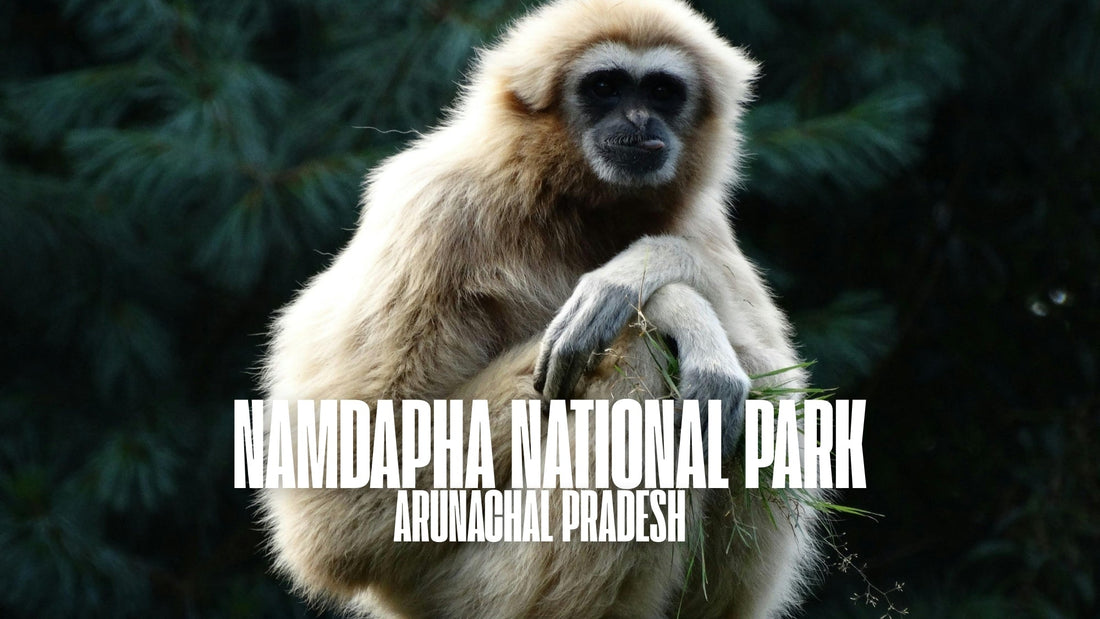
Discover the Wonders of Namdapha National Park
Share
Namdapha National Park, located in the northeastern state of Arunachal Pradesh in India, is a true gem of biodiversity. Covering an area of over 1,985 square kilometers, this national park is a haven for nature lovers and wildlife enthusiasts alike. Let's delve into the wonders that make Namdapha National Park a must-visit destination.
What makes Namdapha National Park unique?
Namdapha National Park is home to a remarkable diversity of flora and fauna, with over 1,000 plant species and more than 400 bird species. The park's rich biodiversity is attributed to its unique location at the junction of the Indo-Malayan and Indo-Chinese biogeographic regions. This convergence of ecosystems has resulted in a stunning array of wildlife and plant life.
Discover the wildlife
One of the main attractions of Namdapha National Park is its diverse wildlife population. The park is home to iconic species such as the Bengal tiger, snow leopard, clouded leopard, and Indian elephant. Visitors may also spot the elusive Hoolock gibbon, one of the rarest primates in the world. With over 60 mammal species and numerous reptiles and amphibians, the park offers a truly immersive wildlife experience.
Namdapha National Park's diverse topography, ranging from lowland tropical forests to high-altitude alpine meadows, provides a variety of habitats for different species to thrive. This unique combination of ecosystems has led to the evolution of several endemic species within the park.
Notable Endemic Species in Namdapha National Park
One of the most iconic endemic species found in Namdapha National Park is the Namdapha Flying Squirrel (Biswamoyopterus biswasi), a rare and elusive species of flying squirrel that is only found in this region. The park is also home to the Namdapha Hoolock Gibbon (Hoolock hoolock namdaphaensis), a subspecies of hoolock gibbon that is endemic to the park.
Challenges Facing Endemic Species in Namdapha National Park
Despite the protected status of Namdapha National Park, endemic species in the region face several threats, including habitat loss due to deforestation, poaching, and climate change. Conservation efforts are crucial to ensure the survival of these unique species for future generations.
Conservation Efforts in Namdapha National Park
The forest department and various conservation organizations are actively involved in monitoring and protecting the endemic species in Namdapha National Park. Measures such as habitat restoration, anti-poaching patrols, and community engagement programs are being implemented to safeguard the biodiversity of the park.
Exploring the endemic species of Namdapha National Park offers a glimpse into the intricate web of life that exists in this remote wilderness. By understanding and appreciating the importance of these unique species, we can contribute to their conservation and ensure the preservation of this biodiversity hotspot for future generations to enjoy.
Explore the lush forests
The dense forests of Namdapha National Park are a sight to behold. The park is characterized by its pristine tropical rainforests, which are teeming with life. Trekking through the lush greenery, visitors can witness a variety of plant species, including orchids, rhododendrons, and bamboo. The park's towering trees provide a habitat for a myriad of bird species, making it a paradise for birdwatchers.
Experience the local culture
In addition to its natural wonders, Namdapha National Park offers a glimpse into the rich cultural heritage of the local tribes. The park is home to the Lisu and Tangsa tribes, who have inhabited the region for centuries. Visitors can interact with the indigenous communities, learn about their traditions, and sample local cuisine. This cultural immersion adds a unique dimension to the overall experience of visiting Namdapha National Park.
Whether you are a nature enthusiast, wildlife lover, or cultural explorer, Namdapha National Park has something to offer everyone. With its unparalleled biodiversity, stunning landscapes, and vibrant local culture, this national park is a true treasure waiting to be discovered.
